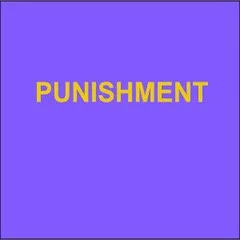By The Washington State Office of the Corrections Ombuds Solitary Confinement Research Team (OCO-SCRT). . Research Team: Angee Schrader OCO-SCRT Project Lead Senior Corrections Ombuds - Investigations E.V. Webb, M.E.S. OCO-SCRT Thematic Analysis Lead Assistant Corrections Ombuds - Investigations Elisabeth Kingsbury, J.D. OCO Deputy Director Heather Bates OCO Public Records & Contract Manager Madison Vinson, J.D. OCO Assistant Corrections Ombuds - Policy Sara Appleton OCO Quality Assurance & Training Manager Zachary Kinneman
Civilian oversight of corrections brings an independent set of eyes and, if done correctly, the values of integrity, respect, collaboration, equity, and courage to bear witness to the ways in which the norms and cultures of carceral systems are rooted in secrecy, a lack of transparency, and rules and regulations. The Washington State Office of the Corrections Ombuds (OCO) is the only civilian oversight of the Washington State corrections system established in state government with the authority and responsibility to investigate actions or inactions of the Washington Department of Corrections (WADOC). The OCO routinely monitors places that are among the most opaque public institutions in our state – the state’s corrections facilities (prisons and reentry centers). In addition to monitoring prisons and reentry centers, the OCO, in its capacity as the statewide prison oversight mechanism, responds to the governor and legislature’s concerns about conditions of confinement and the inherent dangers of living and working inside corrections facilities. Advocates of eradicating the use of solitary confinement in WADOC have waged a multi-year campaign requesting greater attention be paid to what happens to people living and working inside prisons in the state of Washington. Some elected officials have demanded greater accountability and transparency from the WADOC about the use of solitary confinement. Multiple bills calling for a reduction in solitary confinement have been introduced in the state legislature in recent years; however, none have passed out of the legislature. At the end of the 2023 legislative session, seeing that once again, a bill requiring the WADOC: to reduce the use of solitary confinement would not pass out of the legislature, a request was made of the OCO to write a report answering a short list of specific questions about the WADOC ‘s historical and current use of solitary confinement. This report, Solitary Confinement: Part II, looks deeply at the experiences, perspectives, and opinions of a sampling of people who have lived in solitary confinement in WADOC prisons with the goal of providing additional context to the data discussed in Part I. The final release, Solitary Confinement: Part III, will piece together Part I and Part II in a discussion of opportunities for further administrative policy changes and legislative solutions. Solitary Confinement: Part II highlights the voices and experiences of a sample of 13 individuals who have spent extensive time in solitary confinement while incarcerated in the state of Washington. This report also provides key terms, photographs, and further context for public understanding of solitary confinement in Washington State prisons. The goal is to provide greater transparency around the conditions and experiences of people living in solitary.



